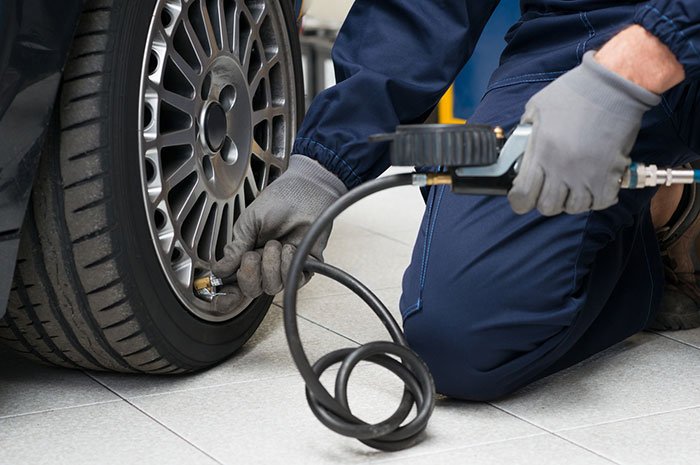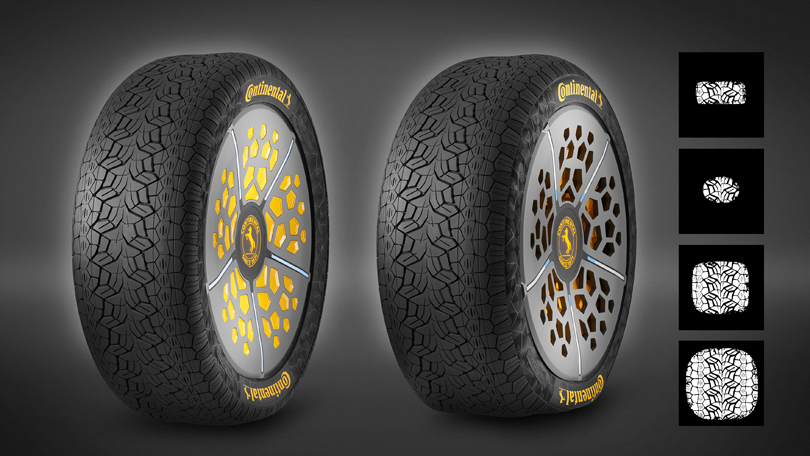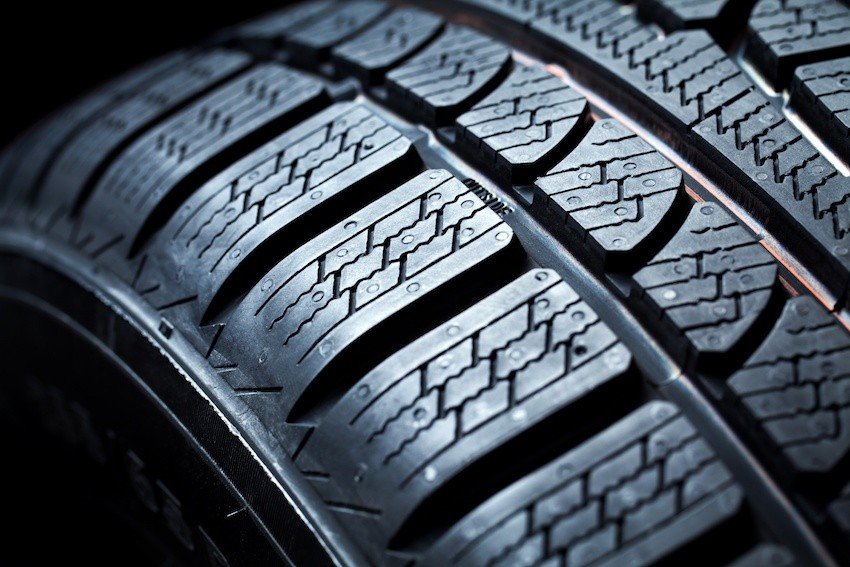Daniel Davidson, MD, MBA, DBA, PHD
Introduction:
Tire pressure may appear to be a routine part of car maintenance that is frequently disregarded until a warning light appears on the dashboard. For tires and cars alike to be safe, effective, and long-lasting, it is necessary to comprehend the science underlying tire pressure and how it affects performance. Tire pressure affects many aspects of a car’s performance on the road, including handling, braking distance, and fuel efficiency.
Fundamentals of Tire Pressure:
Tire pressure is a crucial component of tire care that has an immediate effect on the performance, safety, and fuel economy of a vehicle. To preserve the best possible tire health and guarantee a safe driving experience, it is imperative to understand the fundamentals of tire pressure.
Definition:
Tire pressure, often expressed as pounds per square inch (psi), is the volume of air inside a tire. For the tire to retain its shape and sustain the weight of the car, the right tire pressure is essential.
Importance of Correct Tire Pressure:
There are various reasons why it’s important to have your tires inflated correctly.
Safety:
Having properly inflated tires lowers the chance of an accident by improving handling, braking, and traction.
Gasoline Efficiency:
Tires that are underinflated have more rolling resistance, which can result in less gasoline being used and more fuel being consumed.
Tire Wear:
Improper tire pressure can result in uneven tire wear, shortening the tires’ life and perhaps causing an early failure.
Handling and Comfort: Well-inflated tires improve overall driving comfort by providing improved handling and a smoother ride.
Finding the Correct Tire Pressure:
The owner’s handbook or a placard on the driver’s side door jamb will typically provide the recommended tire pressure for your car. For optimal results and safety, you must utilize the required pressure.
Checking Tire Pressure:
Since driving warms up tires and can alter pressure readings, tires should be checked frequently, preferably when they are cold. The tire pressure can be measured with a tire pressure gauge, and any necessary modifications should be done in accordance with the manufacturer’s instructions.
Tire pressure should be checked and adjusted as necessary in order to maintain proper pressure in the tires. Tire pressure should always be checked, especially in colder months when temperature swings can have a significant impact.
TPMS:
The Tire Pressure Monitoring System (TPMS) is a feature found in many contemporary cars. It tracks tire pressure and notifies the driver if it drops below a predetermined level. In addition to improving overall safety, TPMS assists drivers in maintaining appropriate tire pressure.
Impact of Decreased Inflation:
Tire underinflation can have a number of negative consequences on a car’s safety and performance. Some of the main consequences of underinflated tires are as follows:
Increased Rolling Resistance:
Underinflated tires absorb more of the vehicle’s weight than they should. The engine must work harder to move the car ahead because of the increased rolling resistance caused by this deformation. This lowers fuel efficiency, which raises fuel consumption and increases the driver’s expenses.
Accelerated Wear:
Tires that are underinflated have uneven wear patterns, with the tread wearing down more quickly on the outside than the inside. This early wear shortens the tire’s lifespan overall, requiring more frequent replacements and raising the owner of the vehicle’s maintenance expenses.
Decreased Traction:
Compared to properly inflated tires, underinflated tires have a smaller contact patch with the road surface. Traction is decreased by this smaller contact area, particularly in slick or rainy circumstances. This impairs the vehicle’s handling and stability and raises the possibility of skidding or losing control, especially while making fast turns or applying emergency braking.
Increased Heat Build-Up:
When tires are underinflated, internal friction causes them to flex more than they should while rolling, producing excess heat. This accumulation of heat can lead to early tire deterioration and raise the possibility of blowouts or other types of tire failure, especially while traveling at high speeds or carrying large loads.
Extended Stopping Distances:
Well-inflated tires offer maximum adhesion to the pavement, facilitating effective stopping. Underinflated tires, on the other hand, make braking systems less effective and cause longer stopping distances. This can greatly raise the possibility of accidents, particularly in dire circumstances where every inch of stopping distance counts.
Handling and Stability Compromised:
When a car is underinflated, it feels less responsive and is more likely to sway or drift, especially when cornering or accelerating. This can lead to compromised handling and stability. The probability of accidents is increased by this poor handling, especially in circumstances where the vehicle needs to be controlled quickly and precisely.
Effects of Over Inflation:
Decreased Traction:
Tires that are too inflated have a smaller area of contact with the road, which results in decreased traction. This may lead to reduced grip, particularly in slick or rainy weather, which may impair control and braking effectiveness.
Uneven Wear:
Because the middle of the tread carries greater weight and generates more contact with the road surface, overinflated tires are more likely to show wear in that area. Premature tire wear and the requirement for early tire replacement may result from this.
Harsh Ride:
Tires that are inflated too much are less flexible and have a reduced capacity to cushion impacts from uneven surfaces. This may lead to a rougher ride, which would be uncomfortable while driving, particularly on uneven terrain.
Increased Risk of Damage:
Because overinflated tires are less able to flex and absorb impact force from potholes, curbs, or road debris, they are more vulnerable to impact damage. This may result in damage such as punctures or other issues that weaken the integrity of the tires.
Decreased Fuel Efficiency:
Although rolling resistance can be decreased by overinflated tires, this has no practical impact on fuel usage. In certain circumstances, overinflated tires might actually result in less fuel economy due to their increased wear and less traction.
Compromised Handling:
While a car is overinflated, it can make it feel more responsive but less stable, especially while accelerating or making sharp turns. This may make it more likely that you will lose control of the car, especially in an emergency.
Increased Risk of Blowouts:
Overinflated tires are more likely to blow out because the extra pressure may be greater than what the tire can support, particularly while driving at high speeds for extended periods of time or in hot conditions.
Optimal Tire Pressure:
In order to guarantee tire longevity, performance, and safety, the tire pressure must be at its ideal level. It speaks about the precise air pressure that the manufacturer of the car recommends for a given tire, accounting for things like tire size, vehicle weight, and road conditions. Sustaining the ideal tire pressure has various advantages:
Safety:
In an emergency, especially, properly inflated tires offer superior traction, handling, and braking capabilities. This lowers the possibility of collisions and improves general road safety.
Fuel Efficiency:
When tires are underinflated, rolling resistance increases and more energy is needed to drive the vehicle. Fuel consumption rises and fuel efficiency falls as a result. Drivers can minimize carbon emissions and increase fuel efficiency by keeping their tires inflated to the recommended level.
Tire Wear:
Improper inflation causes tires to deflate more quickly and require replacement sooner rather than later. In the long term, properly inflated tires save money by prolonging tire life and promoting more even wear.
Handling and Stability:
Tires that are properly inflated will keep their shape and make the most touch with the road. This enhances the handling, stability, and general driving pleasure of the car, particularly on rough roads.
Measuring Tire Pressure:
With the correct equipment, measuring tire pressure is a simple task that can be completed quickly and effortlessly. This is a detailed how-to for checking tire pressure:
Verify the Recommended Pressure:
Prior to taking a tire pressure reading, find out what the vehicle’s manufacturer recommends. Usually, the owner’s handbook or a placard located inside the driver’s door jamb include this information.
Use a Tire Pressure Gauge:
A tire pressure gauge is required in order to measure tire pressure. There are numerous varieties available, including as dial, pencil, and digital gauges. Select an accurate and user-friendly gauge.
Check Tire Pressure When Cold:
It is advisable to check tire pressure when the tires are cold in order to obtain precise measurements. This calls for checking them three hours after driving or before getting behind the wheel.
Find the Valve Stem:
The valve is covered by a tiny cap on each tire valve stem. To reveal the valve, take off the cap from the valve stem.
Press the tire pressure gauge firmly on the valve stem to guarantee a tight seal. It’s usual to hear a tiny hissing sound while doing this.
Assess the Pressure:
The tire pressure value will appear on the gauge. This reading should be compared to the vehicle’s required pressure. It will be necessary to add air to the tire if the pressure is too low. You’ll need to expel some air if it’s too high.
Modify the Pressure:
You can use a portable air pump or an air compressor at a petrol station to add air. Use a specialized tire pressure tool or the tiny pin on the rear of the pressure gauge to release air.
Check the Tire Pressure Again:
Make sure the tire pressure is within the advised range by checking it once more after correcting it.
Replace the Valve Cap:
To shield the valve from dirt and debris, replace the valve cap once you’ve completed measuring and changing the tire pressure.
Repeat for All Tires:
If you have a spare tire, use it. Otherwise, repeat this procedure for each tire.
Impact of Temperature:
Temperature’s effect on tire pressure is an important factor in vehicle performance and safety. Tire pressure is impacted by the expansion and contraction of air in tires due to temperature changes. Maintaining the best possible tire performance and making sure that driving conditions are safe require an understanding of this phenomenon.
Expansion and Contraction:
As temperatures rise, tire pressure rises as a result of tire air expanding. On the other hand, as the temperature drops, the air constricts and the tire pressure drops. Tire pressure can fluctuate significantly, changing by roughly 1 psi for every 10°F variation in temperature.
Effects on Tire Performance:
Variations in tire pressure brought on by temperature can directly affect tire performance. High temperatures can cause tires to become overinflated, which can impair handling and traction and limit vehicle control. On the other hand, cold temperatures can cause underinflated tires, which can lead to higher rolling resistance, less fuel efficiency, and faster tire wear.
Monitoring and Adjustment:
Drivers should routinely check their tire pressure and make any necessary adjustments to counteract the effects of temperature on it. It is advised to check tire pressure while the tires are cold because driving warms them up and might cause readings to be off. Maintaining optimal performance and safety can be facilitated by routinely checking tire pressure, particularly during temperature fluctuations.
Seasonal Considerations:
When temperatures shift from one season to another, like from winter to summer, they do so more dramatically. In order to ensure safe driving conditions, drivers should be extremely watchful about checking tire pressure and making any necessary adjustments when the temperatures rise in the spring.
Sufficient Tire Inflation for Safety:
Sufficient tire inflation is essential for the security of motor vehicles. Improved grip, handling, and braking capabilities of properly inflated tires lower the chance of collisions, particularly in inclement weather.
Benefits of Proper Tire Pressure:
Maintaining ideal car performance, safety, and fuel efficiency requires proper tire pressure. The following are some major advantages of keeping your tires inflated correctly:
Enhanced Fuel Economy:
Tires that are underinflated may have more rolling resistance, which forces the engine to work harder to drive the car. Fuel consumption may increase and fuel efficiency may decline as a result. Maintaining correctly inflated tires can reduce fuel expenses and increase gas mileage.
Improved Safety:
Better handling, braking, and traction are all made possible by properly inflated tires. On wet roads, they are less prone to hydroplane or slide, which lowers the possibility of collisions. Additionally, stable vehicles are maintained by having properly inflated tires, particularly when making emergency stops or abrupt moves.
Increased Tire Life:
Uneven wear patterns from underinflated tires can result in early tire wear and the need for replacements. You can prolong the life of your tires and reduce the cost of replacement by keeping the proper tire pressure.
Ideal Handling and Performance:
Tires that are correctly inflated keep their shape and contact patch with the road, which promotes ideal handling, cornering, and general performance of the vehicle. This is especially crucial when driving in hazardous situations like the rain, snow, or off-road terrain.
Decreased Risk of Tire Failure:
Tire blowouts and unexpected breakdowns can result from overheating, which is more likely to happen with underinflated tires. It is safer to drive with properly inflated tires because they can dissipate heat more effectively and are less prone to fail.
Benefits to the Environment:
Keeping tires properly inflated can help cut down on carbon emissions and lessen environmental damage. Vehicles that are more fuel-efficient emit fewer greenhouse gases, which helps to create a cleaner, greener world.
Respect for Regulations:
Tire pressure and vehicle safety are topics covered by standards and regulations in many places. You can guarantee adherence to these rules and prevent possible fines or penalties by keeping your tires inflated to the recommended level.
Conclusion:
Tire pressure is a critical component of both tire performance and car safety. In order to maintain ideal tire conditions, drivers may make more educated decisions if they are aware of the science underlying tire pressure and how it affects tire performance. Drivers can increase fuel efficiency, prolong tire life, and improve overall driving experience by routinely monitoring and adjusting tire pressure to the manufacturer’s guidelines. Not only is proper tire pressure necessary for safety, but it also guarantees the best possible handling and performance from the vehicle.







